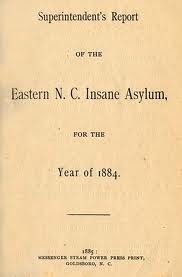At the Canton Asylum for Insane Indians, superintendent Dr. Harry R. Hummer was far enough away from the Commissioner of Indian Affairs to avoid direct supervision. Hummer outlasted five commissioners: Francis Leupp, Robert Valentine, Cato Sells, Charles Burke, and Charles Rhoads before commissioner John Collier threw him out of the asylum and the Indian Service.
One advantage Hummer had–as did other superintendents elsewhere–was that locals wanted the asylum to remain open and running. Insane asylums represented huge boosts to local economies. Most towns or cities where asylums were located were quite happy about having them, and were proud of the work they did. Canton was no different. Locals enjoyed the employment and local contracts that came from the asylum and usually spoke of it quite enthusiastically.
When Hummer began to finally receive less than glowing reports, he managed to have some friends in Sioux Falls appointed as an inspection committee. They came through for him in a report to Commissioner Charles Burke early in 1929. “We went through the plant thoroughly from top to bottom and . . . found everything in first class condition.” The writer then concluded, “I consider Dr. Harry Hummer a wonderful superintendent of this institution and he has many fine employees.”
______________________________________________________________________________________



